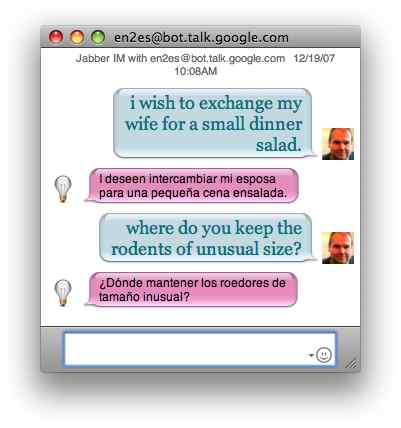Portapak world, encore une fois.
Sunday, December 23rd, 2007
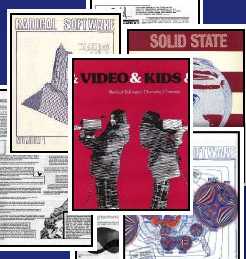 Wow, here I was thinking about early alternative video last week or so and now, a few of the surviving pioneers of early handheld television…the heroes of helical, the visionaries of vidicon tubes, have gone and put the preeminent journal of that technology in that time, Radical Software, up on the web in a near-flawless example of preservation, giving us searchable, downloadable riches. The wise communiards of the Videofreex and the Raindance folks, live again, in earnest black-and-white pixels…this time in PDF, not NTSC.
Wow, here I was thinking about early alternative video last week or so and now, a few of the surviving pioneers of early handheld television…the heroes of helical, the visionaries of vidicon tubes, have gone and put the preeminent journal of that technology in that time, Radical Software, up on the web in a near-flawless example of preservation, giving us searchable, downloadable riches. The wise communiards of the Videofreex and the Raindance folks, live again, in earnest black-and-white pixels…this time in PDF, not NTSC.
This publication (and no, ‘Software’ did not refer to computer programs in that far-distant context) was one of my textbooks, one of my guides during my Goddard days, and paging through the Letraset-ty, IBM Composer-typeset and typewriter-type pasteups seems to not only nurture my nostalgia centers, but get me to thinking more about Big Ideas in the realm of communications perched here comfortably into the 2000s.
The portable videotape camera-and-tape deck system, or “portapak,” has been called by some, the most revolutionary breakthrough in media since Gutenberg.
—Philip Lopate in “Aesthetics of the Portapak,” in volume 2 number 6. And he was just getting warmed up. I wonder how many times Gutenberg’s name has been invoked in the context of new communications technology, say, since Gutenberg?
There are some real surprises here, and I’m gonna have to plow systematically through here to glean all the cool stuff. (If you’re interested in the basic history, this page does a fine job of pulling that together.) Did you know that Seattle glass artist Dale Chihuly was an early force in independent video as he tried to use the new medium to broaden and illuminate the older one? Mhm. Looking at pages packed with experiments-in-video-as-public-art (“walk through a room full of monitors showing scenes from around the world, and…”) …well, I wonder what they’d make of The Situation Room.
Wolf Blitzer ≠ Nam June Paik, in my estimation.
Boy, if the early Whole Earth Catalogs and Mother Earth Newses would be given this quality of online preservation (nicely-scanned PDFs with searchable, cut-and-pasteable texts), I would be in seventies heaven, and maybe some Ideas Worth Sharing would be given new lives.
Reading in bed.
Friday, December 21st, 2007
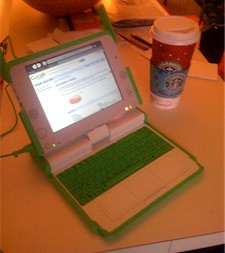 I’ve written about (without laying hands on) Amazon’s Kindle and of course I’ve been exploring with our new OLPC (One Laptop Per Child) XO, poking and prodding it through external connections, reconfiguring it so that it chats with the outside world correctly, calling up page after web page (“hmm, that looks quite readable and fine.”), but I didn’t draw any dots connecting the two. This O’Reilly Radar post does…it considers the OLPC as a reading machine (which, indeed, it is.) Purchasing the XO represents the same cash outlay (although the Get One, Give One program provides two machines—you keep one—for that price)…its screen is larger than the Kindle’s (had no idea), the OLPC has terrific wifi reception versus the Kindle’s ‘free’ EVDO cellular networking…and of course the XO will display web pages, feeds, PDFs, ebooks, pretty much everything you throw at it…and that’s where the Kindle steps aside.
I’ve written about (without laying hands on) Amazon’s Kindle and of course I’ve been exploring with our new OLPC (One Laptop Per Child) XO, poking and prodding it through external connections, reconfiguring it so that it chats with the outside world correctly, calling up page after web page (“hmm, that looks quite readable and fine.”), but I didn’t draw any dots connecting the two. This O’Reilly Radar post does…it considers the OLPC as a reading machine (which, indeed, it is.) Purchasing the XO represents the same cash outlay (although the Get One, Give One program provides two machines—you keep one—for that price)…its screen is larger than the Kindle’s (had no idea), the OLPC has terrific wifi reception versus the Kindle’s ‘free’ EVDO cellular networking…and of course the XO will display web pages, feeds, PDFs, ebooks, pretty much everything you throw at it…and that’s where the Kindle steps aside.
Oh, and the XO’s screen has color (except in bright outdoor light) and more dots per inch.
And is all open source.
At any rate, I stayed up late reading last night on the XO, depleting its batteries for several hours. I’m worried that the clicking of the ‘page down’ key might be just a bit too loud for extensive in-bed reading next to a sleeping partner, but it worked well otherwise.
BotTalk, babelfish-style.
Wednesday, December 19th, 2007
Hand me the universal translator, Mr. Spock. Google launched almost-instantaneous translations in your chat client today, and the Mandarin one is already clogged up. But hey, my Spanish is improving!
XOXO to children everywhere.
Tuesday, December 18th, 2007
 There are buses that go from downtown Oaxaca out to Xoxocatlán, which is, I guess you’d say, a suburb of the capital city of Oaxaca state, perched on the south side of the huge hill the archaeological site Monte Alban sits on. It’s pronounced “hoho-caht-LAN”…and folks know the bus is going there because a simple ‘XOXO’ has been scribbled high up on the windshield. A bus with hugs and kisses.
There are buses that go from downtown Oaxaca out to Xoxocatlán, which is, I guess you’d say, a suburb of the capital city of Oaxaca state, perched on the south side of the huge hill the archaeological site Monte Alban sits on. It’s pronounced “hoho-caht-LAN”…and folks know the bus is going there because a simple ‘XOXO’ has been scribbled high up on the windshield. A bus with hugs and kisses.
I think of that town, for some reason, when I look at the OLPC XO that Sammy and I bought as part of their “Give one, Get one” program. It is a cute, tough machine whose logo is a merger of an X and O into a human shape (some have said the Cingular guy got work after he was laid off), and Xs and Os permeate the clever user interface.
It arrived Saturday in the rain, and the UPS person tucked it up against the front door, where we first spotted it Sunday morning (we’re glad neighborhood thieves were out partying elsewhere Saturday night.) Out of the slightly damp box came a cleverly-designed computer, the work of a devoted team of people who are trying to put these in the hands of as many of the world’s children in as functional a way for as cheap a price as they can.
As part of that mission, for a bunch of obvious political reasons, they want to make it 100% open source, resilient, and accessible. It is a minimalist machine by many folks standards—only 1 GB of Flash memory instead of a hard disk, and 256 MB of RAM, and a single-core processor. And yet, because of the hard work of a determined team that cannot be said to be in it for any reason other than to help, it is what it is, a fine machine for a child to use to work with, to learn, to paint, draw, write, communicate, and oh yeah, play. There are a lot of smarts inside and behind this machine, and plenty of Python-y juiciness to play with (what other machine lets you examine the source code of running applications with the touch of one button?)
One of the people who saw it at James and Rebecca’s holiday open house on Sunday paid it the ultimate compliment: “What kind of Mac is it?” Several said they could see using it as a small coffeehouse writing and surfing machine. (This speaks, by the way, to a general worldwide desire for a powerful, light subnotebook, that I hope will be satiated by a new kind of MacBook in January.) Many liked the idea that you could buy one while simultaneously buying one for a kid somewhere for whom the XO might open all kinds of rich doors.
I’m certainly a Mac guy, an admirer of clever design, and yet I have no trouble extending that admiration to the work of the folks who made the OLPC XO. There are some really smart choices and decisions made here (and a few dubious ones, but hey, it’s version 1.0.) Thanks for doing something.
If I had $10,000…
Wednesday, December 12th, 2007
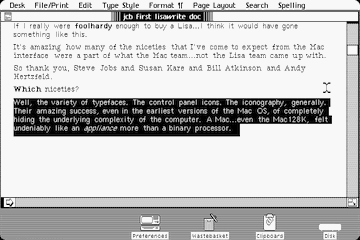 …back in 1983, I would have been just nerdy enough to buy one. And sit, broke, in my apartment, creating documents no one would ever read on the first no-kidding GUI-based computer (I exclude the Xerox Alto here), not to be confused with its successor, the Mac, which really, really changed everything.
…back in 1983, I would have been just nerdy enough to buy one. And sit, broke, in my apartment, creating documents no one would ever read on the first no-kidding GUI-based computer (I exclude the Xerox Alto here), not to be confused with its successor, the Mac, which really, really changed everything.
And made me $2500 or so poorer as it did it.
Now, thankfully, I can simply download a free Lisa emulator and party like it’s 1983. LisaWrite! LisaCalc! LisaTheWebHasn’tBeenInventedYet!
(Click on image to see it larger, by the way.)
There’s a great site that pulls together software that allows you to run dozens of old computers, calculators, games, and doodads in emulation…I am astonished, heartened, amused by the accumulated urges of long-time computer users to recreate the digital homes they left behind so many upgrades ago.
I understand that urge. It’s irrational, but I share it. A machine very much like my old IBM Selectric is on sale at eBay. I hear it’s call, I have no need. Maybe someone will write a Selectric emulator…
Portapak world.
Wednesday, December 12th, 2007
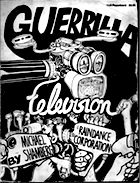 Sometimes I think I have Seasonal Nostalgic Disorder. I correlate it fairly closely with my attempts to clean our house…to remove the layers of clutter that come from the deadly combination of being alive for a good long time plus being fans of the printed word. The plus side of that is you come across stuff you think has long left for the dumpster. Like this book.
Sometimes I think I have Seasonal Nostalgic Disorder. I correlate it fairly closely with my attempts to clean our house…to remove the layers of clutter that come from the deadly combination of being alive for a good long time plus being fans of the printed word. The plus side of that is you come across stuff you think has long left for the dumpster. Like this book.
I have long been, as you know, a fan of television, and I remember getting very excited when Guerilla Television came out…this now thoroughly antique 1971 publication posited a world where television would be democratized by these newfangled “portapaks”—we’d all walk around with tiny video cameras, recording everything…and that would lead to A Better World.
Quoth Shamberg and company:
It may be that unless we redesign our television structure our own capacity to survive as a species may be diminished.
Wow. Far out, man!
The “first how-to book for new media tools” got me excited by the prospect of being able to create videos just like the big guys, but by the mid 1970s when I went off to college and actually tried to use a Portapak and looked at the results—blotchy, fuzzy black and white images that couldn’t even cleanly transition—in a cut—from one shot to another without additional hardware, more tape, a good deal of luck, and the willingness to put up with even more analog generation loss. That’s correct…you couldn’t cut…even that caused a roll and bounce of the wobbly helical videotape recording.
From my standpoint, this vision arrived well ahead of the technology, and in what may be a telling piece of self-realization, I knew that the only television I wanted to make was crisp, clean, and what was then called “broadcast quality.” I was willing to go work at “big media” (although it turned out to be a baby version of that at Ted Turner’s WTCG) to use (expensive) tools that made good-looking product…it didn’t bother me (again, tellingly) that my message was “watch Casablanca, tonight at 8 on the SuperStation.”
It took an extra decade or two for the vision of democratic television to become realized, but I think we are now living in a post-YouTube world, where it really is easy to put video “out there.” Yeah, maybe too easy.
But here, amidst a big-media writers’ strike, amidst consolidated big-media’s attempts to put out cheaper programming in as many monetizable (is that a word?) forms as possible, amidst endless uploads of water-skiing dogs, it a treat to be able to reread this early attempt to characterize what must have seemed like a far-off world…where everyone can do TV.
And the author? Well, he went on to become pretty big, old media—he produced The Big Chill, Pulp Fiction, and..uh..Reno 911. Wonder what he thinks about the strike? Or, about YouTube as the democratizing of television?
Bargains like these.
Tuesday, December 4th, 2007

Ah, the holiday shopping season. Amazing deals everywhere you look…but it helps if you put your brain on ‘pause.’ (from Consumerist.)

